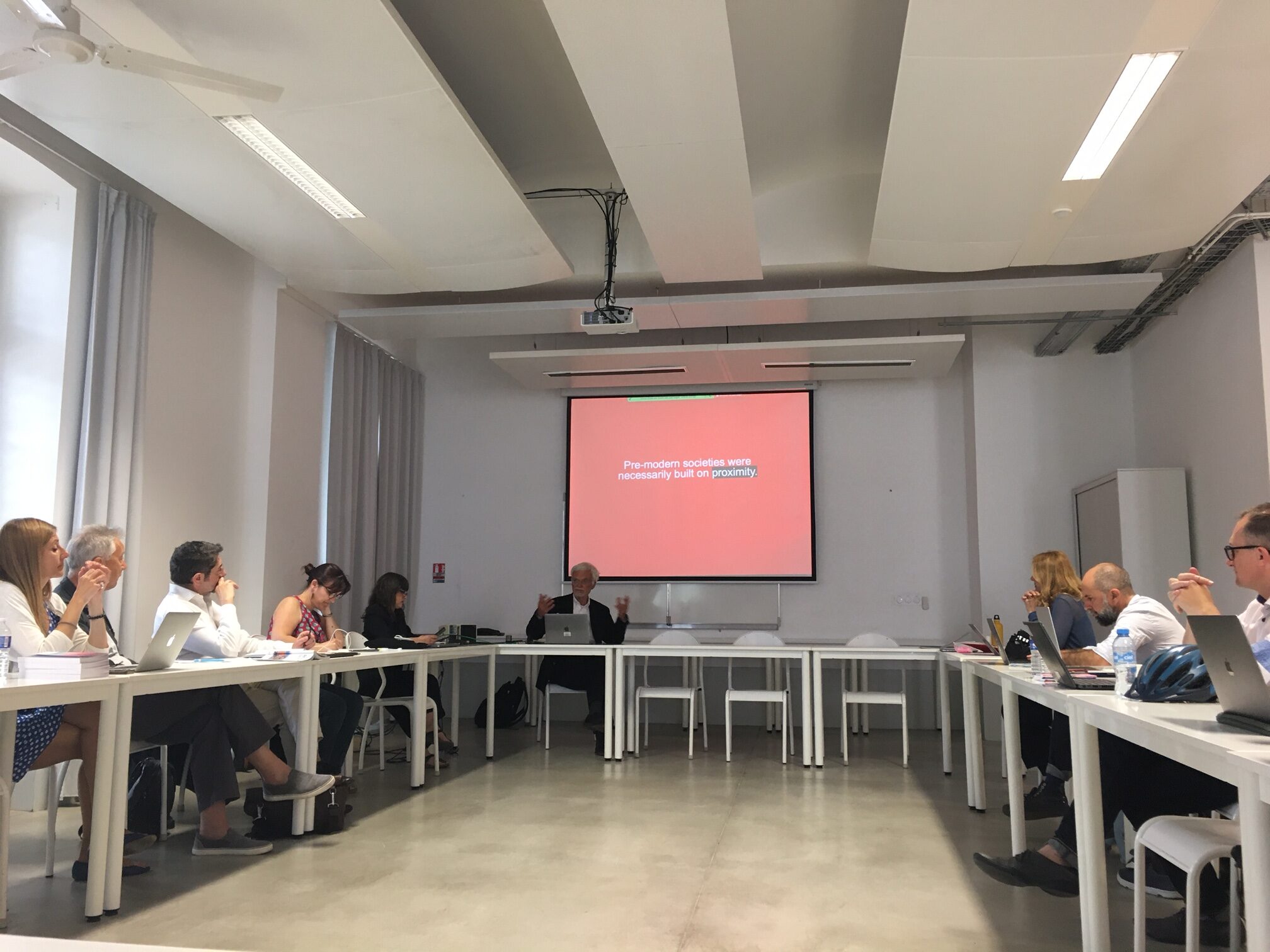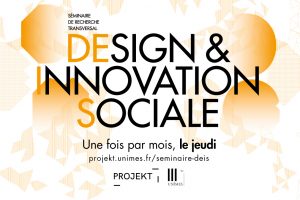
Le 24 Mai 2022,
Invité.es : Ezio Manzini (Desis Network), Caroline Gagnon (Université de Laval), Anna Bernagozzi (Ensad)
Le séminaire mensuel transversal DEIS « Design Et Innovation Sociale » de l’année universitaire 2021-2022 a pour but de discuter la notion d’innovation sociale afin de questionner collectivement les futures perspectives de recherche du laboratoire PROJEKT, né au moment de l’apparition et de la diffusion de ce terme. Nous invitons, à cette occasion, des chercheuses et chercheurs nous permettant d’avancer dans nos réflexions. Ces échanges, présentations, débats seront compilés dans un ouvrage (dont le format sera hybride web + print).
Université de Nîmes, site Hoche, salle 111
Le programme :
9h-12h – Conférences
9h-9h30 – Introduction
9h30-10h40 – Ezio Manzini présentera son dernier ouvrage « Habiter la proximité » en axant son intervention sur l’innovation sociale
Livable proximity – A design-orienting scenario for social innovation
In the past century the spatial organization, of modern societies has been dominated by the effects of an idea of efficiency based on specialization and the economy of scale. In the name of efficiency, some areas have specialized: those where to work, those where have fun, those where study, those where go back to sleep. We can refer to all of this as the scenario of distance.
Over time, however, it clearly emerged that the application of this scenario was leading to very serious environmental and social problems. Therefore, since long time some cases appeared in which this model began to clash with other ideas and practices, driven by the need to bring together what had been separated and to reconnect what had been disconnected. That is, to bring services, workplaces and people’s homes closer together. These new ideas and practices, i.e. these social innovations, con be seen as the beginning of a new, emerging scenario: the scenario of proximity.
Although the problems of the society of distance were evident since long time, until 2019, the ideas and practices that had led to the definition of the scenario of proximity have slowly advanced. Then the pandemic arrived and, paradoxically, the same sanitary distancing it required has shown everyone how important physical proximity is: the social role of neighborhood services; the advantage of working close to where you live; the importance of having good relationships with the tenants next-door. In short, the value of the scenario pf proximity has been recognized by a growing number of people and institutions
The lecture discusses this scenario of proximity, showing how it has emerged from the grassroots social innovations of the past 20 years, and how, in some large cities, it has become a reference for action, sometimes using the expression « 15-minute city, with the creation of new proximity systems capable of responding to many, if not all, the daily needs of citizens.
Finally, underlining how the strategies for approaching this scenario are profoundly place-based, the lecture also identifies some common traits and focuses on one of them.
10h40-11h00 – Pause café.
11h00-12h10 – Caroline Gagnon présentera ses recherches et/ou projets qui questionnent l’innovation sociale et publique.
Espoir et naïveté : ambiguïté du design en contexte public
À partir de mes expériences de recherche pour les organisations publiques, j’interrogerai la capacité d’agir en design pour orienter et infléchir la décision publique en faveur de l’amélioration de la vie des citoyens. J’aborderai le rôle ambiguë du design et potentiellement instrumentalisable à des fins d’acceptabilité sociale de projet d’infrastructures contestées, la responsabilité du design et du designer dans des projets de design de mobiliers publics et enfin, les limites de l’expertise et des connaissances dans des contextes d’intervention en milieux de soins hospitaliers. Ces projets montrent tous qu’il est nécessaire de dépasser l’idéalisme positif du design parce qu’ils évoluent dans des contextes publics complexes. Ils ouvrent la voie à une intégration d’approches du design plus rigoureuses sur le plan des sciences humaines et sociales et une reconnaissance plus fine du caractère politique de toutes actions qui visent le bien commun et la justice sociale.
La conférence sera ouverte aux publics (sur invitation). Le format : conférence de 45 minutes, suivie d’échanges de 25 minutes.
12h10-14h00 – Déjeuner
14h00-14h30 : Présentation de l’ouvrage “Infinite creativity for a finite world” issu du programme européen From Conflict to Conviviality through Creativity and Culture (4Cs)
par Anna Bernagozzi (Ensad)

